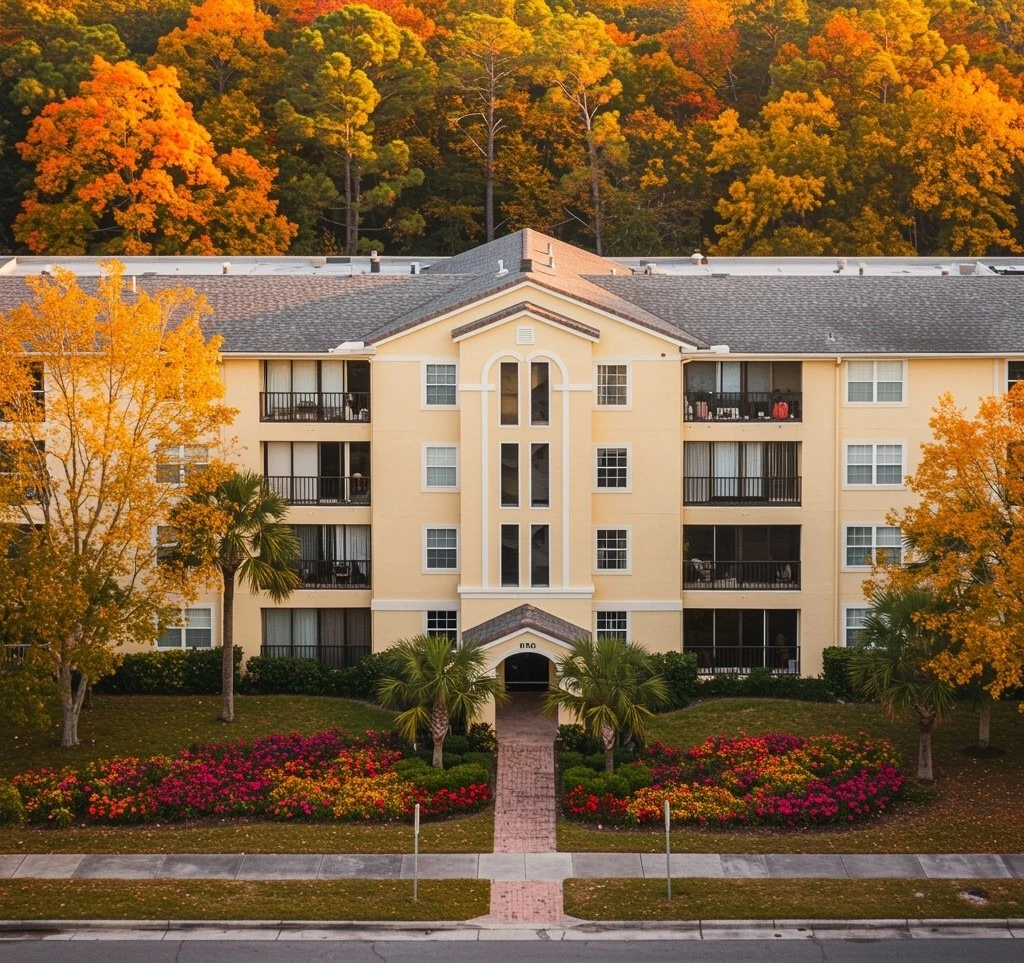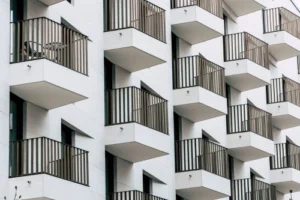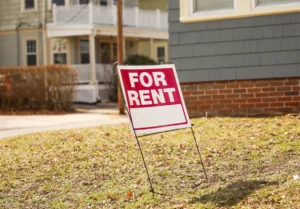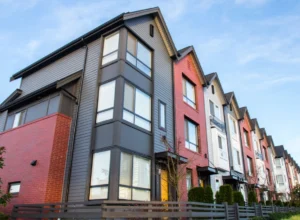Fall in the Southeast

Seasonal Preventative Exterior Maintenance for Apartments
Property managers are no strangers to the challenges of turnover, tenant retention, and budget constraints. But one area that often slips under the radar is the exterior of the building—the part that tenants don’t always notice until problems are unavoidable, yet it’s the first line of defense against costly emergencies.
This fall, investing in seasonal preventative exterior maintenance isn’t just about keeping up appearances. It’s about saving money, protecting property value, and staying ahead of the weather conditions unique to the Southeast.
Fall in the Southeast: The Perfect Time for Preventative Maintenance
In Florida and across the Southeast, hurricane season lingers through November, making this a critical time to evaluate exterior systems. High winds, driving rain, and flooding test every weak spot in a building—from gutters and seals to roofs and siding. Neglect now could mean major repairs after the next storm.
The good news? Our region also enjoys relatively mild fall weather. That makes this the ideal time to tackle outdoor projects like painting, pressure washing, or sealing windows—jobs that are harder to schedule in peak summer heat or winter cold. By taking advantage of the season, you not only prepare for potential storms but also set your property up for efficiency through the months ahead.
The Hidden Risks of Overlooking Exterior Maintenance
Unlike interior issues, tenants don’t often report exterior problems until it’s too late. That makes it easy for property managers to overlook the warning signs. Here are some of the most common problem areas:
Window Sealings
Seals around windows can deteriorate over time, allowing water to seep in and air to leak out. This not only raises utility bills but also creates conditions for mold growth inside units. According to the U.S. Department of Energy, up to 30% of heating and cooling energy is lost through poorly sealed windows.
Gutters
Clogged or damaged gutters are one of the leading causes of water damage in multifamily properties. When gutters overflow, water can back up into roofs, spill down siding, or pool around foundations—causing structural damage and landscaping erosion. The Insurance Institute for Business & Home Safety reports that improper drainage is a major contributor to foundation issues.
Exterior Painting
Paint isn’t just cosmetic—it’s a protective barrier against UV rays, humidity, and storm-driven rain. Faded or peeling paint exposes wood and siding to moisture, leading to rot and higher repair bills. In Florida’s humid climate, fresh paint also helps fight against mold and mildew growth on surfaces.
Pressure Washing
Mold, algae, and grime build up quickly on exterior surfaces in humid regions. Left untreated, they don’t just hurt your property’s appearance—they actually break down materials over time. Pressure washing removes damaging buildup while giving properties a fresh, inviting look.
Mold Remediation
Moisture intrusion from leaks, poor drainage, or faulty seals often leads to mold—a costly and serious problem if left unchecked. Mold can damage walls and siding and create health complaints from tenants. According to the Environmental Protection Agency, mold problems should be addressed within 24–48 hours of detection to prevent spreading.
Paying Too Much For Insurance?
Get a FREE quote to insure your rental properties for less.
Why Luxury Properties Can’t Afford Exterior Neglect
Luxury and Class A apartments compete on more than location—they compete on image. Peeling paint, dirty siding, or visible mold can instantly undermine the “premium” reputation these communities rely on to command higher rents.
Regular exterior care is essential to:
- Preserve curb appeal that attracts tenants.
- Reinforce brand reputation as a well-managed, high-value property.
- Extend the life of finishes and materials, protecting investment long-term.
The Checklist: Seasonal Preventative Services That Protect Your ROI
Every fall, property managers should review these key services to avoid emergencies and protect operating income:
- Mold remediation – prevent long-term structural issues and tenant health claims.
- Window sealing – cut energy costs and stop leaks.
- Exterior painting – protect surfaces from water damage and UV wear.
- Gutter cleaning – prevent roof leaks and foundation erosion.
- Pressure washing – remove buildup that damages surfaces and hurts curb appeal.
- Roof inspections – catch small issues before storms or winter weather magnify them.
- Drainage checks – ensure water flows away from the property, not into it.
- Exterior lighting – improve tenant safety and security before daylight hours shorten.
The ROI of Staying Proactive
Preventative exterior maintenance isn’t just an expense—it’s an investment.
- Lower repair costs: Addressing issues now avoids major emergency repairs later.
- Reduced liability: Well-lit, mold-free, and structurally sound exteriors protect tenants and reduce legal risks.
- Tenant retention: Properties that look well cared for keep residents happy and loyal.
- Higher property value: Exterior upkeep directly supports NOI by reducing vacancy risk and maintaining asset value.
Source: CAC Pro













 Accessibility
Accessibility